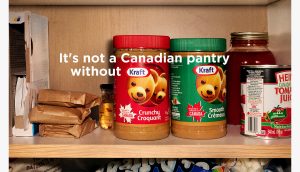Ongoing softness in advertiser demand was once again a drag on Corus’ performance in the third quarter, leading to further job cuts as part of cost-saving measures.
Revenue across the company was down 8% year-over-year for the three months ended May 31. For the year-to-date, revenue is down 7%.
Doug Murphy, president and CEO of Corus, cited the “advertising recession” that began last year for the revenue decline, as well as the CRTC’s Canadian expenditure requirements, which include increased spending to make up for expenditure shortfalls during the pandemic. However, similar to the previous quarter, he said the company was balancing near-term challenges with evolving the company to be better suited to compete in the future.
To that end, Murphy said Corus has been “intensely pursuing efficiencies and improved productivity with significant cost reductions as we streamline our operating model,” including cutting more than 250 full-time jobs and reducing its workforce by about 8% so far in 2023. He said this, along with the slate of content announced during Upfronts, would position Corus well for “an inevitable improvement in the economy.”
Corus confirmed this month that it would be restructuring its original programming team, leading to a “handful” of cuts amid an “enterprise-wide cost review.” The broadcaster previously confirmed layoffs at Global News, but did not disclose the number of positions impacted.
Revenue in the television segment was down 8%, including a 12% drop in ad revenue and a 5% dip in subscriber revenue. Subscriptions were down due to ongoing audience shifts away from linear TV, but Corus said the results were also impacted by the comparison to the prior year, which benefited from a retroactive adjustment.
The list of sectors that reduced their ad spending in Q3 was a long one, including financial services, health and beauty, retail, direct-to-consumer, services, alcoholic beverages, government, communications and toys. However, travel and entertainment brands continue to step up their ad spending compared to last year. For the year-to-date, ad revenue in TV is down 11%; Corus said that nearly every advertiser category has either held or reduced ad spending, with exception of travel, packaged goods and gambling (which, despite its increase for the year-to-date, dipped slightly in Q3).
A small bright spot in the television segment was distribution and production, where revenue grew by 6% year-over-year. This was due to higher deliveries from Nelvana, though Corus Studios and Aircraft Pictures saw their revenues decline slightly.
While revenue from optimized advertising (including audience segment selling and the Cynch automated buying platform) and new platforms (including streaming and digital platforms) both declined alongside the rest of the company, they now make up a greater portion of Corus’ TV revenue. Optimizing advertising revenue now represents 53% of TV ad revenue, up from 47% the year prior. New platforms now make up 12% of total TV revenue, up from 11% the prior year.
Advertiser pullback also impacted revenue in the radio segment, which was down 11% year-over-year, though declines in terrestrial radio were partially offset by increases in podcast revenue. On the radio side, professional services, telecommunications, entertainment and retail had the biggest ad spending decline, while there was some growth in government and political ads.
























